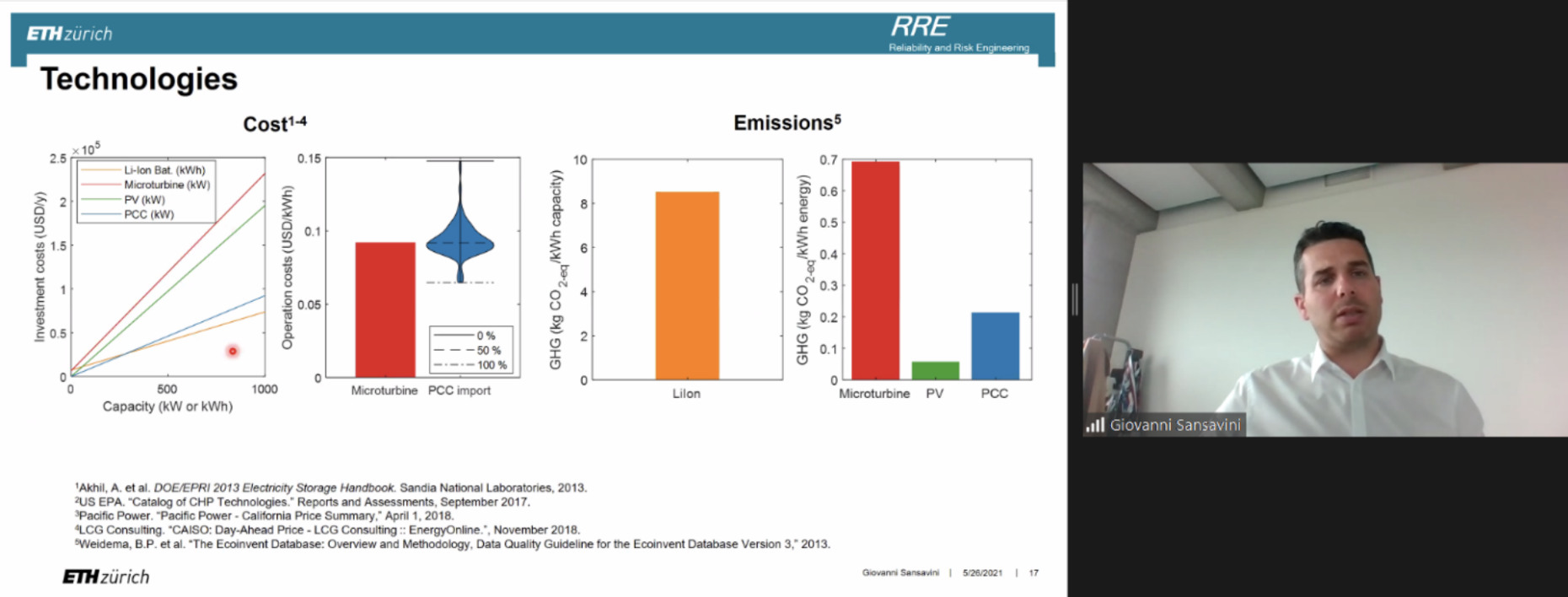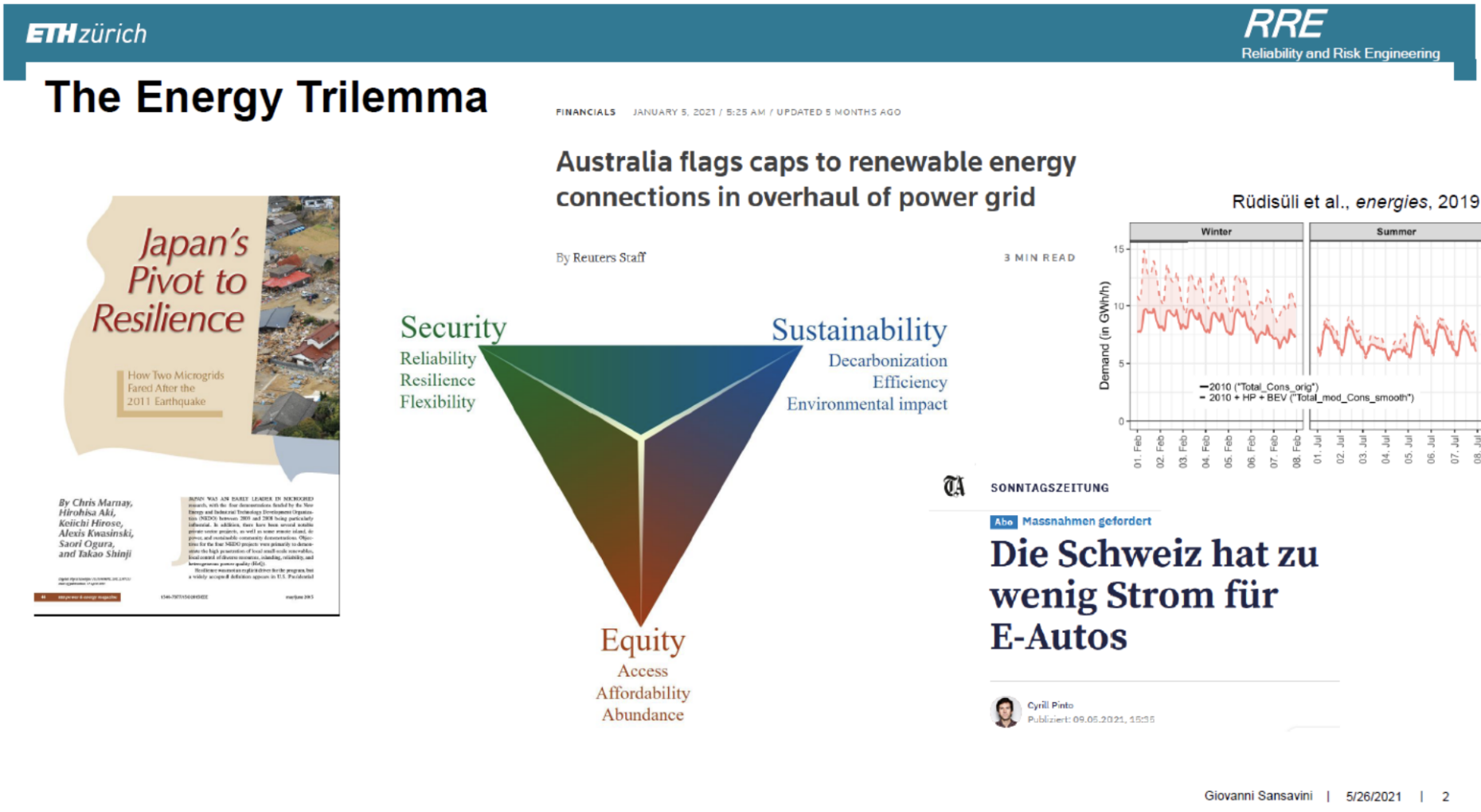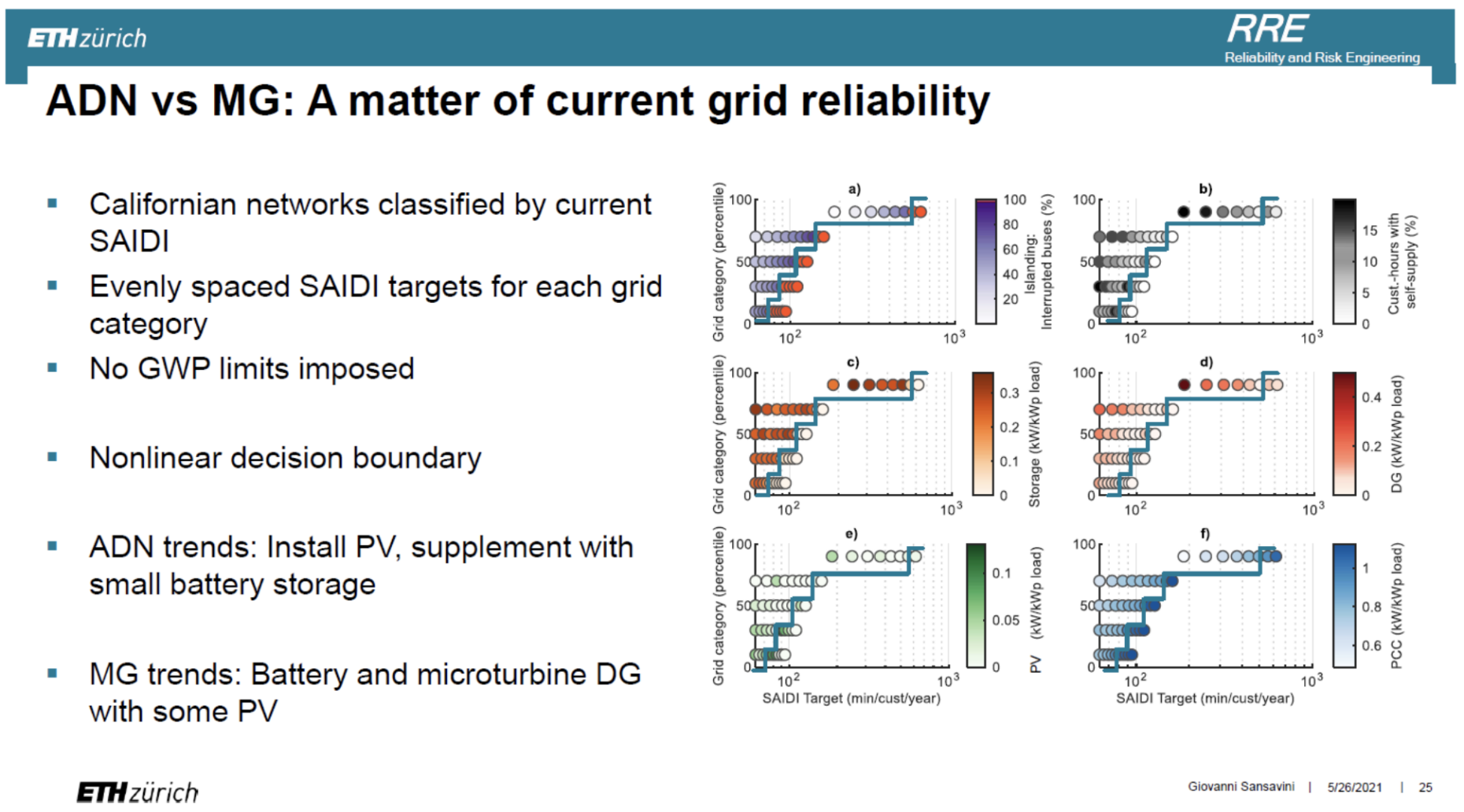Energy trilemma in active distribution networks design: Balancing cost, emissions and security.
Professor Dr Giovanni Sansavini from the Department of Mechanical and Process Engineering at ETH Zurich focuses his research on Reliability and Risk Engineering. The talk explains a model for the effects of Active Distribution Networks on the energy trilemma between Sustainability, Security and Equity.
by Florian Dorner and Lucio Tassone

Contrasting Japan’s success in mitigating power outages after the 2011 earthquake with the 2016 South Australian blackout highlights the positive impact of decentralized energy solutions like Active Distribution Networks (ADNs) and Microgrids on energy supply security. At the same time, the decarbonization of heating and mobility poses an important challenge to Switzerland’s grid, as electricity demand could double in the process.

Research question: How is the tradeoff in the energy trilemma affected by active distribution networks?
The study’s primary indicators for sustainability, security and equity are greenhouse gas emissions (GHG), the System Average Interruption Duration Index (SAIDI) and costs. Combined with local energy sources, ADNs and microgrids expand the set of possible tradeoffs by enabling flexible adaption to shifts in supply: They can be used within a local grid to dampen the effects of fluctuations in renewable energy supply or power outages affecting the national grid. In addition, they can perform ancillary services like frequency control as well as reliable services, including the provision of electricity to the national grid after a larger scale power outage.
Multi-Objective mixed-integer linear problems to model optimal transition.
The energy trilemma is modelled using Multi-objective optimization to identify the Pareto front in terms of GHG, SAIDI and costs given various constraints on reliability, energy balances and power flow. Input data includes energy demand, as well as characteristics of the grid and different technologies including prices and GHG intensities. To make the resulting mixed integer program feasible, all nonlinear interactions in the model are linearized. Additional computational tricks are applied to deal with the stochasticity of the system and time links due to storage levels. Given the model and inputs, each objective is first minimized independently. Then, the same is repeated multiple times, first constraining one variable to discrete levels and optimizing the others for each level, then constraining two variables and optimizing the last one.
Application.

The model was applied to an artificial benchmark network with the IEEE 123 bus topology. External energy supply was modelled after the Californian distribution grid and calibrated to have similar indicators of supply security. Various paths from current generation networks to more reliable and sustainable grids are identified. Even though GHG targets are the main driver of additional costs, emissions can often be reduced quite cheaply for a given level of supply security. In the optimized scenarios, reliability objectives only become an important source of costs at levels substantially higher than the current Swiss standard. Interestingly, there are some configurations with a little conflict between the indicators (costs, GHG emissions, supply’s security). This highlights the importance of fully exploring the search space.
Regarding energy supply, all optimal points in the model do not primarily rely on (local) fossil fuel usage. The preferred Technology to obtain the highest reliability are microturbines, but photovoltaic (PV) does better in term of GHG emissions. Intermediate solutions substitute microturbines by PV and storage. As learning curves for storage technologies were not considered, these solutions might perform better than the model suggests. Most of the optimal choices for local supply rely on renewables and importing electricity from the larger grid, with the role of the larger grid increasing the less renewables there are.
Energy Services and Economic Implications

Active local grids could also perform energy services in the form or grid balancing. Up-regulation can be performed for particularly high-reliability solutions with high battery and microturbine capacity, while down-regulation can be achieved by ramping down microturbines. However, there is very little capacity to downregulate for low GHG solutions that mostly rely on PV. While energy services and power exports to the larger grid might compensate for around 25% of the investment costs, it is insufficient to incentivize investment on its own. As the distributed solutions require higher capital expenditure, new business models for system operators might be required to make them work financially.
To get a broadened sense of the ISTP and our topics of interest and past seminars visit our Colloquia page.